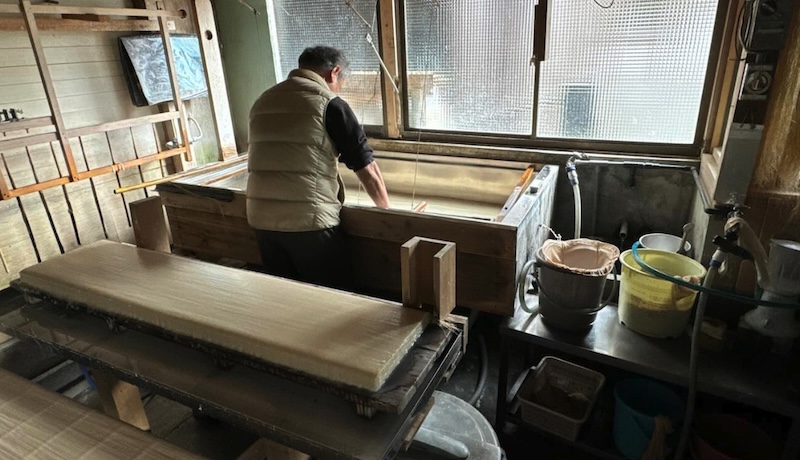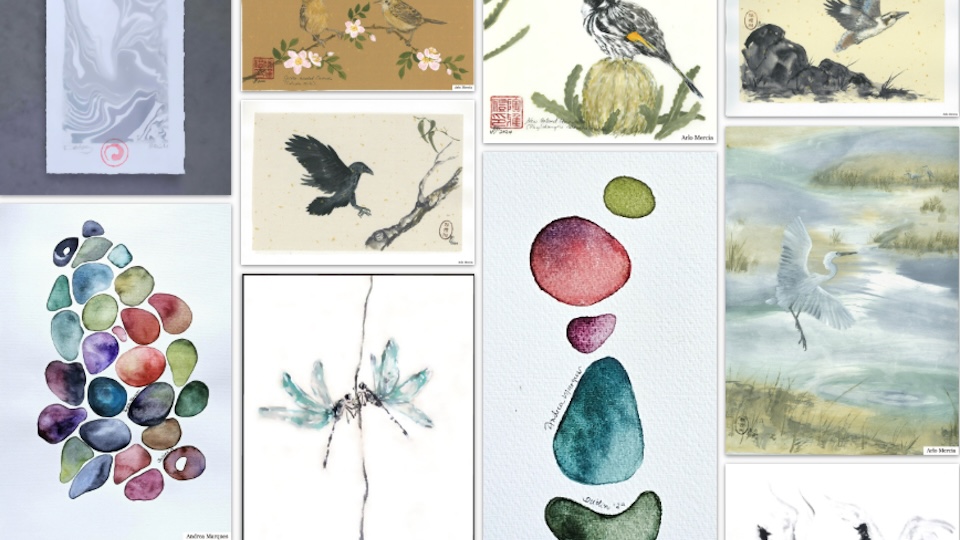Paper has always been an extremely useful product, and has thus been used for diverse purposes. The largest use of paper has been as a recording medium for texts and pictures, and it has made a considerable contribution to the development of cultures and civilizations.
Paper could perhaps be said to be the foundation of culture.
Since the introduction of papermaking techniques to Japan in ancient times, the techniques have improved and developed over time to produce papers of diverse, unique qualities.
One of the characteristics of Japanese paper production is that bast fibers mainly from kozo in addition to gampi and mitsumata, are used as the raw material. Bast fibers are the long, colorless transparent fibers (cellulose) that form on the inside of tree barks, and have flexible and strong properties.

Kozo is a deciduous shrub of the mulberry family, which grows to a height of about 2 to 5 meters. Botanically, it is a cross between Broussonetia kazinoki and Broussonetia papyrifera. It grows naturally in fields and mountains in areas west of the Honshu Island of Japan, but kozo for making paper is cultivated in fields and foothills. Today, a variety of species are grown, including Nasu kozo, Akaso, Aoso and Kurokaji, and are used according to the desired quality of the paper.
In the past, kozo cultivation and papermaking were widely popular in the region from Tohoku to Kyushu, but the cultivation of kozo has decreased steadily along with the decline in the production of handmade paper. To harvest good quality kozo, it is necessary to disbud the shoots and clear the underbrush by hand in the summer.
Furthermore, cultivation requires more time and effort in recent years, due to an increase in damage by deer and other animals. Amid these circumstances, the decrease and aging of producers have advanced to the point where concerns have arisen as to whether good quality, domestic raw materials can continue to be secured. Ibaraki and Kochi Prefectures have become major production regions of kozo today, and an increasing number of paper production regions have also begun to engage in the cultivation of kozo, in the effort to secure stable supplies of domestic raw materials.
They are boiled, beaten and picked clean of foreign matter. The fibers are then carefully separated to make a good-quality paper stock in preparation for papermaking.
Another characteristic is the sheet formation method called nagashizuki (scooping and shaking the fibers) with the use of neri. Today, highly viscous liquid taken from the roots of the tororo-aoi plant and inner bark of the panicle hydrangea plant are used as neri to disperse the fibers in water.
The use of neri has made it possible to scoop the fiber solution with a mould fitted with a screen. By shaking the mould vertically and horizontally, a thin but strong paper is produced.
Traditional Japanese papers made as described above have superior properties, excelling in preservation potential, flexibility, stability, durability, moisture absorption-desorption, and reproducibility.




